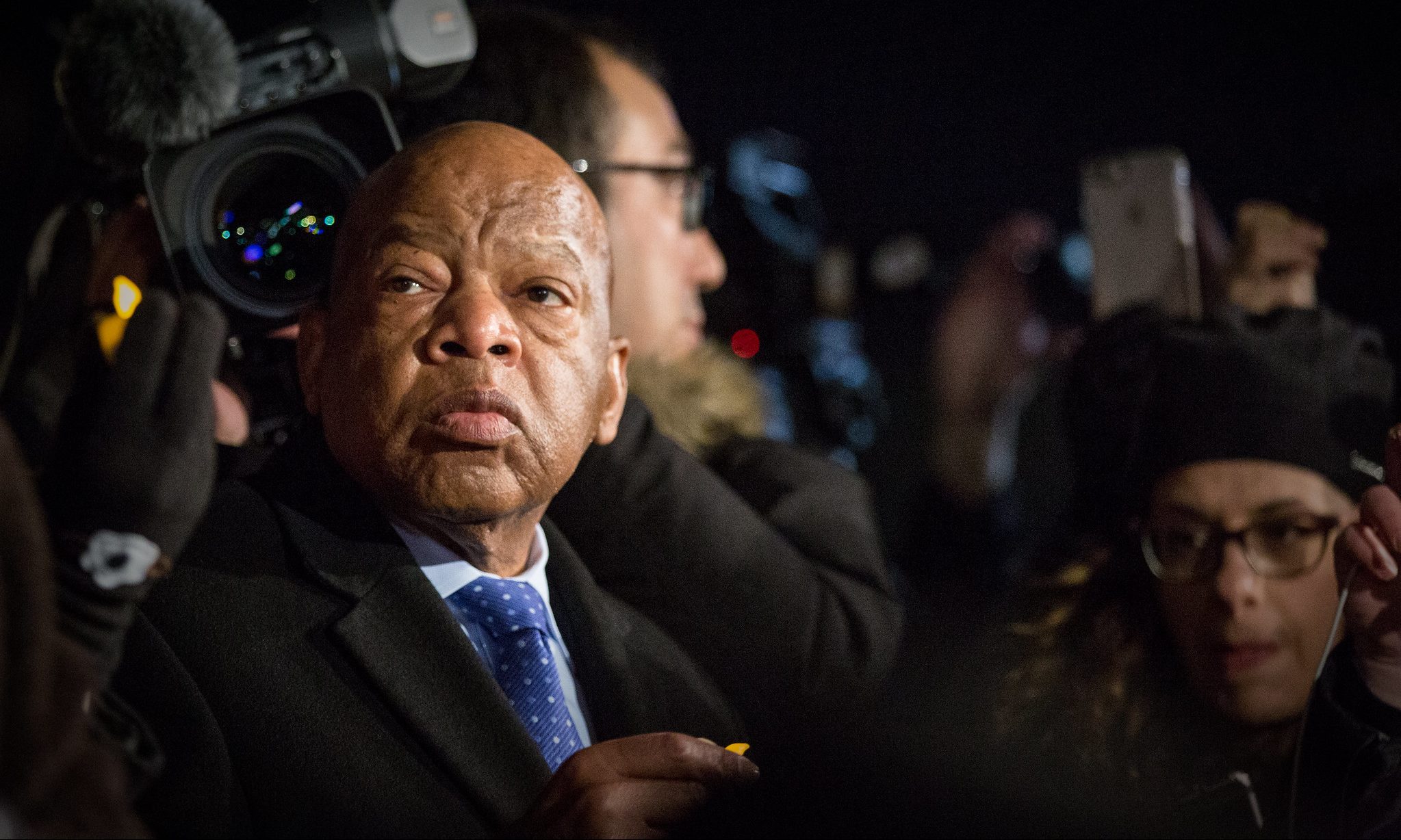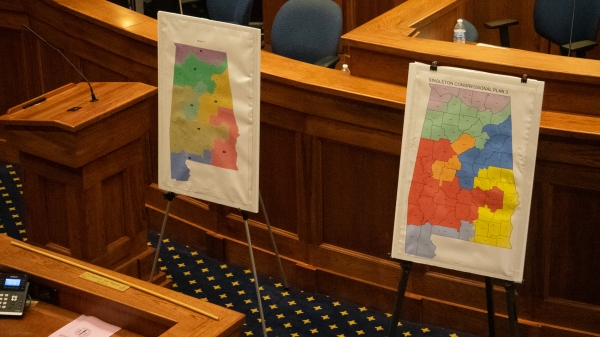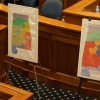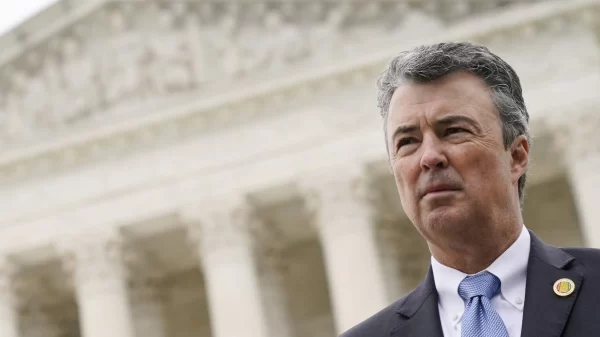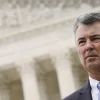By Brandon Moseley
Alabama Political Reporter
State Representative Jim McClendon (R) from Springville was the featured speaker at the August meeting of the Greater Birmingham Young Republicans (GBYR). The retired optometrist is the Chairman of the Alabama House Health Committee and is Co-Chairman of the Joint Committee on Reapportionment with Senator Gerald Dial. Joel Blankenship was chairing the Thursday event.
Rep. McClendon said that ‘Reapportionment’ is counting the people in the state through the census and then dividing that number by the number of districts to get the ideal district population. Redistricting is actually redrawing the lines so that the districts are close to that reapportionment number.
Rep. McClendon said, “For over a century the other party was drawing the lines,” and the district lines they drew were designed to help elect Democrats. In 2010 the Republicans managed to take control of both houses of the Alabama Legislature. Chairman McClendon said, “The significance of the 2010 election is that Republicans get to draw the lines.” “Election results are seasonal variations redistricting results in climate changes.”
“What we have done is make the representatives representative of the people of Alabama.” McClendon said that the goal of the committee was to make redistricting as fair as possible. Rep. McClendon said that the Committee knew from the beginning that their work was going to be reviewed by the Justice Department. The Congressional and state school board districts were done first and the state legislature was redistricted later.
Chairman McClendon said that he made “a real simple deal” with Chairman Gerald Dial. The Senate would redraw their districts and the House would approve the Senate plan IF the Alabama House could draw their districts and not have the Senate change them during the redistricting special session.
Chairman McClendon said, “A Census is a snapshot in time.” The numbers in a district will change over the decade but the districts stay the same for the decade until the next reapportionment. Reapportionment is simple. Take the population count from the 2010 Census and then divide by 35 Senate Districts. For the Alabama House you divide by 105 House districts.
McClendon said the districts in the House currently vary from Rep. Mike Hill (R) in Shelby County with 73,181 people living in his district to Rep. Alvin Holmes 30,880 in his Montgomery County District. In the Senate, Sen. Holtzclaw had 179,058 in his district while Sen. Coleman had just 109,165 in her district. Ten years ago the Democrat used a + or – 5% variation. The Democrats in 2000 intentionally under-populated Democratic districts and intentionally overpopulated Republican districts. “They were not fair.” Chairman McClendon said that they limited the deviation to just 1%. The small deviation made the process more difficult but also made the end product much more fair.
McClendon said that there are constraints on the reapportionment process. 22 people are on the reapportionment committee. The whole process was well documented, transparent, and public participation was welcome. “Senator Dial and I traveled all over the state. We did 22 public hearings.” Some constraints are mandatory: all the districts have to be contiguous and the Voting Rights act of 1965 means that the plans will have to undergo Justice Department review.
Rep. McClendon said that he worked under the anticipation that everything I say and my laptop will be subpoenaed in a future lawsuit(s). Rep. McClendon said that they tried to make recognizable districts, tried to avoid pitting incumbents against each other, and tried to keep communities of interest intact. “You really do not want Mountain Brook and Green County in the same district because they have competing interests that would pull the legislator two different ways. Over 1000 notices were sent out before each hearing. Some meetings had ten people, while some were packed.
McClendon said, “Retrogression is when the minorities (could be racial or language) are worse off after redistricting than they were before. Eliminating a minority district would be retrogression.” Chairman McClendon said that retrogression is not illegal but it is a red flag for the U.S. Justice Department
Rep. McClendon said, “Our Constitution creates House and Senate Districts independent of county lines.” “There is no requirement to respect county boundaries.” Federal court cases and guidelines are interested in population distribution not county lines. Redistricting considered county lines, but they are not paramount. Legislators those whose re-election is most affected by moving district lines will likely rate their political survival ahead of county lines. McClendon said that it is important to always remember that, “Redistricting is a political process.”
The House Redistricting plan, HB 19, was 604 pages long.
The Justice Department cleared the Congressional and state board of education districts in November. McClendon said, “Dial and I followed exactly the same process with the state legislature.”
Rep. McClendon said, “The fact of the matter is that the percentage of minorities in Alabama has not changed since last session: thee problem is they are dispersing.” This makes redistricting and maintaining the majority minority districts very difficult. U.S. Rep. Terri Sewell’s district is in Birmingham touches Tuscaloosa, touches Mobile, and touches Montgomery to get enough black minority voters in the district for the state to still have a majority minority congressional seat.
Chairman McClendon said that there was no retrogression in this redistricting. The Alabama Senate has same number of majority minority districts and the House actually gained one majority minority district. McClendon said that he is projecting that after the 2014 election the number of Republicans in the Alabama House should increase to 68-70 (there are 66 now). In the Alabama Senate he is predicting that the Republicans will have 23 to 25 of the 35 Senate seats following the 2014 election. They have 22 now. McClendon cautioned however, “You don’t always know what the voters are going to do.”
Representative McClendon did acknowledge that he is considering a run for the State Senate.
In other Great Birmingham Young Republicans news:
GBYR members Chris Brown, Joel Blankenship, and Jackie Curtis are delegates to the Republican National Convention. Jackie Curtis is representing Alabama on the Republican platform Committee.
For Young Republicans who are not going to Tampa there will be a convention watching party on the night that Mitt Romney is speaking. That event will be at the Fox & Hound on August 30th at 7:00 pm.
Jackie Curtis announced that Ann Coulter is coming to Birmingham on September 13th and the GBYR will be involved with that event.
You can learn more about redistricting at the websites:
http://policymaker.alabama.gov
http://www.legislature.state.al.us/reapportionment/reap/html












































